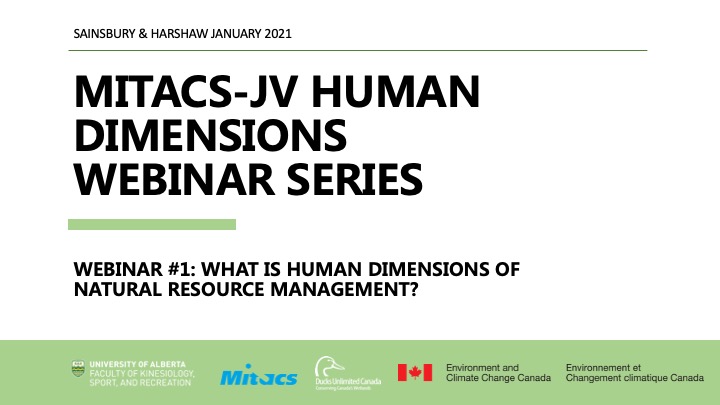The North American Waterfowl Management Plan (NAWMP) is an international partnership to conserve abundant and resilient waterfowl populations and sustainable landscapes. The four Canadian Habitat Joint Ventures collaborate with their partners on waterfowl and habitat management initiatives, including social issues that are relevant to wetland and waterfowl conservation. This page provides resources to support the two goals of our Mitacs/DUC program of research:
- Raise the human dimensions capacity of the Joint Venture community; and
- Understand the attitudes, beliefs, and preferences of stakeholders (i.e., conservationists and citizens who enjoy and actively support waterfowl and wetlands conservation) regarding waterfowl and wetland to support decision-making.
Webinar Series

Webinar #1
This introductory presentation defines the Human Dimensions approach, identifies social science disciplines and fields that can contribute to human dimension inquiries, and provides examples of applied social science approaches to conservation.
Webinar handout

Webinar #2
There are many ways to think about “values”. We discuss economic approaches to value, and use an example of “forest” values” to highlight the different ways that economic and social-psychological traditions approach values. We introduce Swartz’s (1994) basic values and value structure as a means of thinking about the connections between values and behaviour.
Webinar handout

Webinar #3
How can we use the different elements of the cognitive hierarchy to help us promote conservation outcomes that will benefit waterfowl (and upland birds) and their habitats? We introduce the Theory of Planned Behaviour, which draws on attitudes, subjective norms, and perceived behavioural control to better understand behavioural intentions and ultimately behaviour.
Webinar handout
We used two short videos in this webinar:
